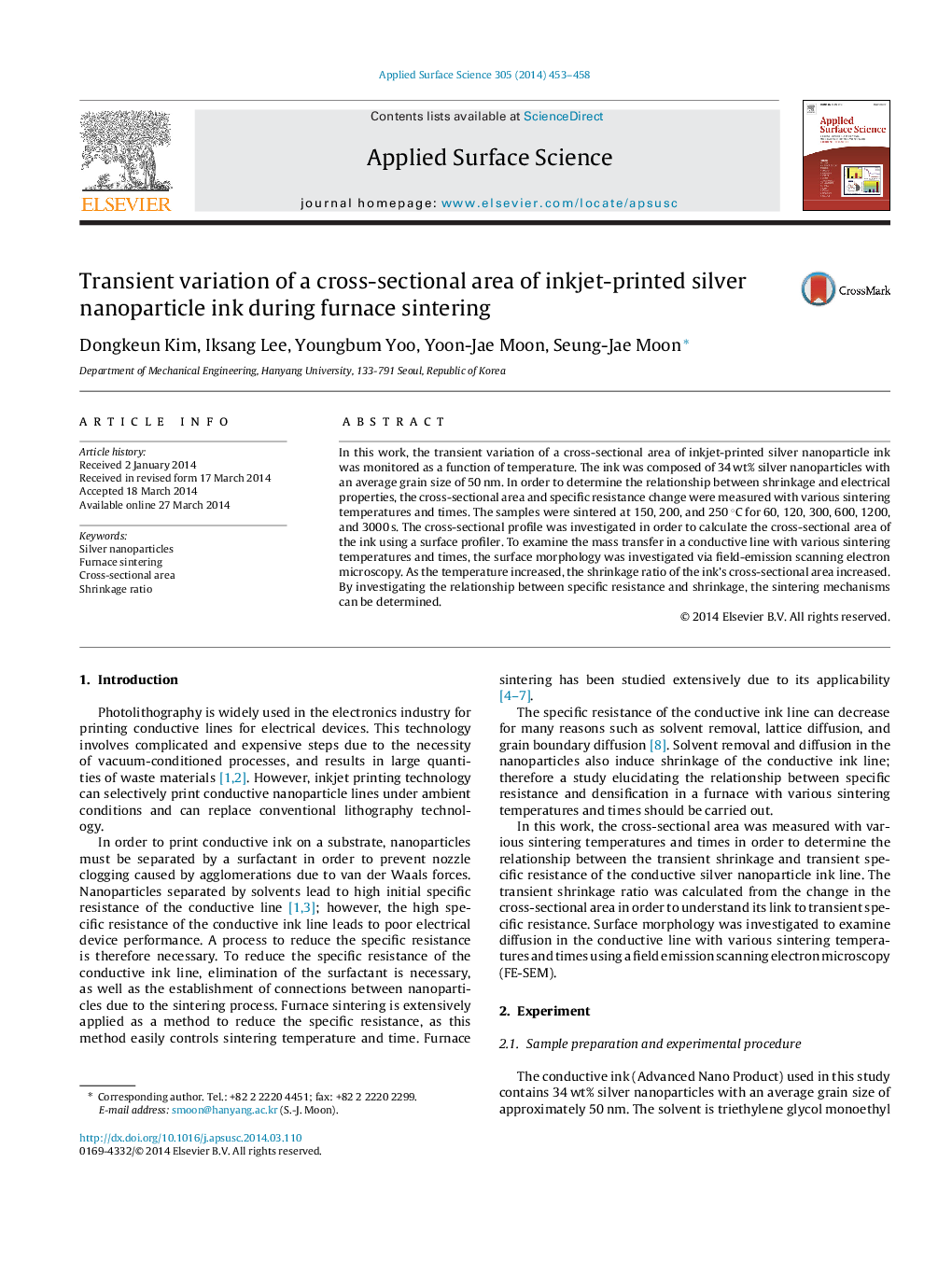| Article ID | Journal | Published Year | Pages | File Type |
|---|---|---|---|---|
| 5350323 | Applied Surface Science | 2014 | 6 Pages |
Abstract
In this work, the transient variation of a cross-sectional area of inkjet-printed silver nanoparticle ink was monitored as a function of temperature. The ink was composed of 34 wt% silver nanoparticles with an average grain size of 50 nm. In order to determine the relationship between shrinkage and electrical properties, the cross-sectional area and specific resistance change were measured with various sintering temperatures and times. The samples were sintered at 150, 200, and 250 °C for 60, 120, 300, 600, 1200, and 3000 s. The cross-sectional profile was investigated in order to calculate the cross-sectional area of the ink using a surface profiler. To examine the mass transfer in a conductive line with various sintering temperatures and times, the surface morphology was investigated via field-emission scanning electron microscopy. As the temperature increased, the shrinkage ratio of the ink's cross-sectional area increased. By investigating the relationship between specific resistance and shrinkage, the sintering mechanisms can be determined.
Related Topics
Physical Sciences and Engineering
Chemistry
Physical and Theoretical Chemistry
Authors
Dongkeun Kim, Iksang Lee, Youngbum Yoo, Yoon-Jae Moon, Seung-Jae Moon,
